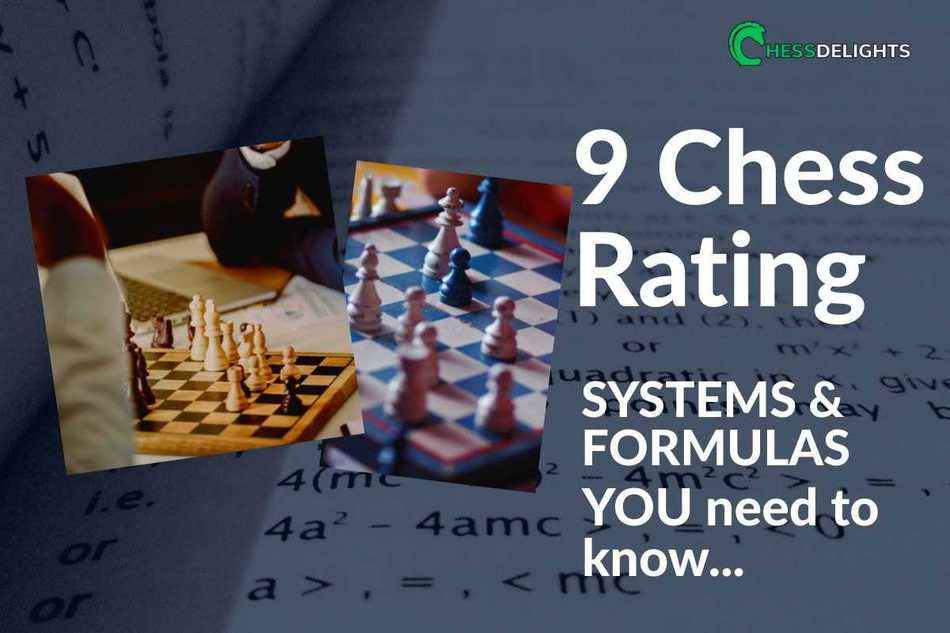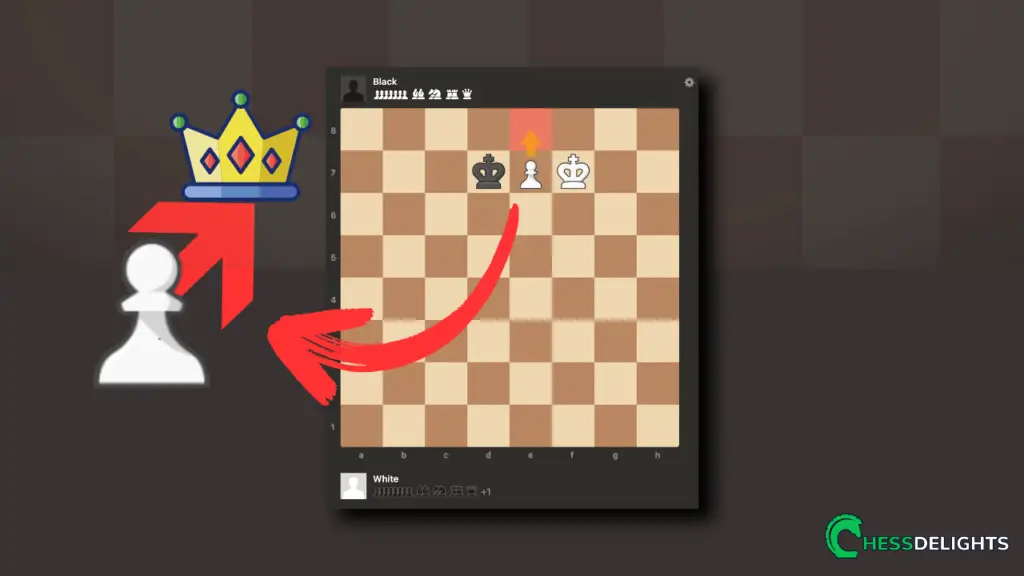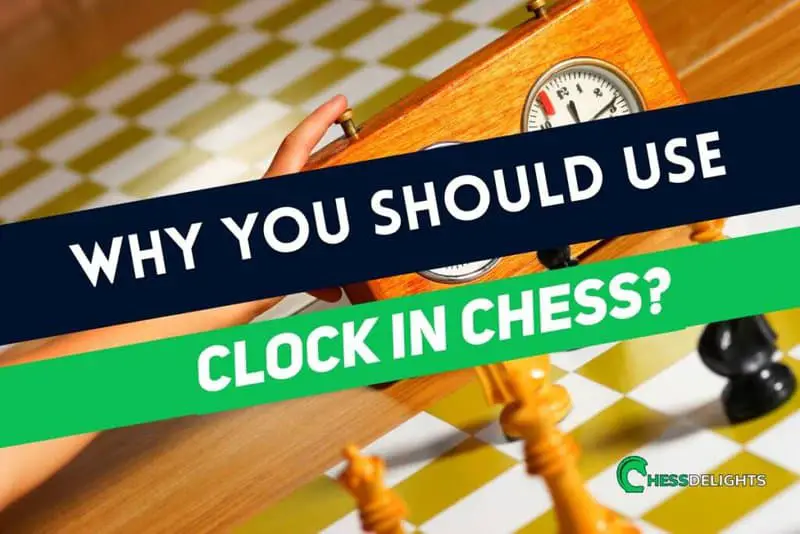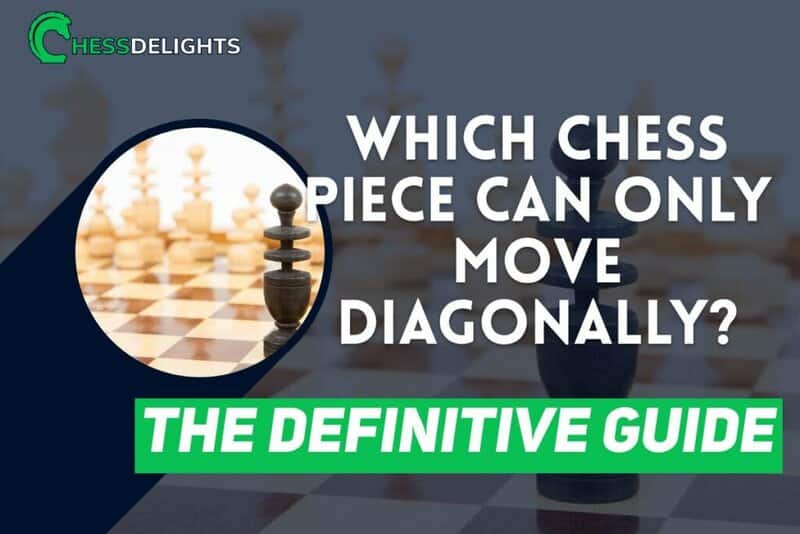Do you want to know what is a good chess rating? Or you want to learn about chess rating system and their formulas?
A chess rating system is a number that tells you how strong and skilled a chess player is. It usually is ranging from 400 to 2000+. If you're playing chess for the first time – you will then receive an initial chess rating.
After you play in a rated tournament, that number will go up or go down depending on how good or bad you will be in the games you have played.
In this article, we are going to learn more about systems of chess ratings, how this actually works in tournaments and learn some formulas and find out what is a good chess rating.
- Ingo System
- Harkness System
- Elo Rating System
- USCF Rating System
- Glicko Rating System
- USA ICCF Rating System
- Deutsche Wertungszahl
- Chessmetrics
- Universal Rating System
Chess rating system and formulas
Planning and building an accurate point system to gauge each chess player is very much a necessity for us to know who is above the rest when it comes to chess rankings.
But there are a few point systems widely utilized to accurately measure or calculate a player's strength based on how he plays the game.
The US Chess Federation, the English Chess Federation, the International Correspondence Chess Federation, and FIDE all employ different methods.
Most of them are being used to calculate the ratings again after a match or a tournament, but some of them are being used to recalculate ratings of individual duels.
Even popular chess sites online use such chess ratings such as Lichess, Chess.com, and Internet Chess Club.
Almost every chess rating system uses a higher number to indicate a strong player opposite to a low number for the weaker ones.
The ratings go up as the player performs better than what is expected of him, and it drops if the performance dips.
When was the first modern chess rating system used?
The rating of the opponent plays a vital role as well as dictates how high or how low will the change of the rating be once the game is over.
In 1939, the Correspondence Chess League of America was where they first used the modern rating system. Andrey Khachaturov, a Soviet player, gave a somewhat similar system in 1946. The first chess rating system that made waves internationally is the Ingo System 1948, while in 1950, USCF used the Harkness System. Briefly, the British Chess Federation used a system made by Richard W. B. Clarke.
The USCF adopted the Elo rating system in 1960, followed by FIDE in 1970.
What are the different chess rating systems?
Let us now dig deeper and find out more about each of these Chess Rating Systems and how they work.
1. Ingo System
This was created and published by Anton Hoesslinger in 1948. It was used from 1948 until 1992 by the West German Chess Federation, replaced by Deutsche Wertungszahl, an Elo-based system.
It has influenced other rating systems. This is where the players' ratings are the benchmark rating of the tournament, and one point will be deducted for each percentage point above 50 that they got from the competition. Not like the other rating systems, the lower the rating, the better is the player it indicates.
2. Harkness System
Kenneth Harkness was the man behind the Harkness System that was made in 1956. It was used from 1950 to 1960 by UCSF and by other organizations.
The average rating of the competition is calculated when players play in a competition. If a player scored 50%, they would get the benchmark or average rating as the performance rating.
But if they got above 50%, they will get a new rating, which is the competition average with an additional 10 points per percentage point above 50.
If the score is below 50%, they will be given the competition average as their rating 10 points less for every percentage point below 50.
Here is an example formula with given values:
A player rated at 1600 who played eleven rounds in a tourney and scored 2 1/2 – 8 1/2 (22.7%) against another player with a rating of 1850. 27% is below 50%, so the new rating of the one who lost is 1850 – (10 x 27.3) = 1577.
3. Elo Rating System
Arpan Elo invented the Elo Rating System, which FIDE and other chess organizations recognize. Elo said that the process of gauging chess players was, in any case, approximate.
He compared it to measuring the location of a cork floating on the surface of moving water using a rope attached to a yardstick and swaying in the wind.
Any attempt by anyone to collate all the aspects of a chess player's strength into a single number inevitably and unintentionally misses a few of the pictures, so he claims that the Elo Rating System is the best estimate or approximation available till today.
The FIDE organized the tournaments into categories in terms of the average grade of the players. Every category is 25 grade points wide. Category 1 is for the average rating of 2251 to 2275, Category 2 for 2276 to 2300 range, etc.
For women's tournaments, the categories decrease by 200 rating points, so Category 1 is for 2051-2075, etc.
What are the different chess rating categories?
Every chess point rating is equivalent to designated categories.
- Ratings ranging below 1200 are called Novices.
- Ratings between 1200 and 1400 are classified as Class D or Category 4
- 1400 to 1600 are Class C or Category 3,
- 1600 to 1800 are Class B or Category 2
- 1800 to 2000 are Class A or Category 1
- 2000 to 2200 are Candidate Master or Experts (in the US)
- 2200 to 2300 are FIDE Candidate Masters, mostly are national masters.
- 2300 to 2400 are FIDE Masters
- 2400 to 2500 are most International Masters and some Grandmasters
- 2500 to 2700 are most Grandmasters
- Super Grandmasters are 2700+.
4. USCF Rating System
The USCF uses a system which is a modified Elo System where the K factor varies, and there are additional bonus points for exceptional performance in the tournament.
The USCF classifies the chess players based on their ratings. Generally, the USCF is 50 to 100 rating points higher than the equivalents on the FIDE Rating Systems.
What are the different USCF chess rating categories?
These are the USCF ratings and their corresponding categories.
- 100 to 199 are for Class J
- 200 to 399 are for Class I
- 400 to 599 are for Class H
- 600 to 799 are for Class G
- 800 to 999 are for Class F
- 1000 to 1199 are for Class E
- 1200 to 1399 are for Class D
- 1400 to 1599 are for Class C
- 1600 to 1799 are for Class B
- 1800 to 1999 are for Class A
- 2000 to 2199 are for Expert
- 2200 to 2399 are for National Master
- 2400 and above are for Senior Master
Example formula of checking Elo chess rating
Elo gave an example of checking for the rating of Lajos Portisch, a chess player with a 2635 point rating who scored 10.5 points in an actual tourney consisting of 16 chess players.
Primarily, the rating difference is determined per player, with Portisch's rating subtracted from the opposing player's rating.
A table is used to predict the expected score between two teams based on the rating difference.
For example, one adversary was Vlastimil Hort, rated at 2600. The 35 point difference on the ratings gave Portisch him an expected score of 0.55 points.
The score expected is totaled for each opponent, giving Lajos Portisch an expected score of 9.66.
The formula is :
new rating = old rating + K x (W-We), where K = 10, where W is the actual score and We is the expected score. Portisch's new rating is 2635 + 10 x (10.5 – 9.66) = 2643.4
What is a linear approximation in the Elo rating system?
Elo came up with an estimate called linear approximation for his new system. With this method, the player's new rating is :
Rnew = Rold + K/2 (W – L + 1/2 [EiDi/C])
Where Rold and Rnew are the old and new ratings of the chess player, Di is the opponent's rating minus the player's rating, L is the number of losses, W is the number of wins, C equals 200, and K equals 32.
Why is Elo rating system formula popular?
It is popular due to two main reasons – it has been around for the longest time and its simplicity.
Given the opposing chess players' strengths, we should calculate who has a better chance of winning.
The wider the gap of the ratings of two adversaries, the higher chance, the higher-rated player wins the game, and the inferiorly rated player likely will lose.
So to calculate a player's rating after battling for a few handfuls of games, simply calculate his foes' average ratings, how many games is he the expected winner, and plug it in the given formula, then you will be able to come up with his new ratings.
5. Glicko Rating System
Was invented by Mark E. Glickman as a modification to the Elo system. Glicko-2 system is an improvement and is being used by the Australian Chess Federation and most online chess gaming sites, specifically the renowned Chess.com.
This is a more modern way that builds on the above concepts but uses a way more complicated formula.
This makes sense as computers can now help with the computation, unlike the Elo method, which is using paper.
It is understandably a bit more tricky, so utmost attention is very much needed at every computation so we can expect a better result.
Is the chess rating system accurate on online chess platforms?
The loophole everyone is clamoring about Elo's system is that they are assuming that everyone's rating is as sure as the others, which is untrue.
For example, if two players will be playing on Chess.com for the first time using Elo's system, both players will be starting with 1200. How will we know then if both players are rightful of 1200?
Maybe until he plays 1000 games, we could be sure of the rating being as razor-sharp accurate. The Glicko System can give everyone not only a rating but a “Rating Deviation” or simply called RD.
This is referred to more formally as the “confidence interval.” Essentially, if you began playing Chess.com, we are 95 percent confident that your ratings are between 300 and 2100, which is a pretty large range, as indicated by the enormous RD.
As you play along, we may be 95% sure your ratings are at 1600 to 1700, which represents a smaller RD. So as you play more games, your RD gets lower and lower, and the system little by little is getting your EXACT range.
6. USA ICCF System
In the 1970s, the International Correspondence Chess Federation or ICCF of the United States utilized its own method, but it currently employs the Elo System.
It was on March 26, 1951, when the International Correspondence Chess Federation or ICCF was founded.
Regarding tournaments, ICCF uses their own language-dependent chess notation which is then applied to different events that they organize like individual tournaments and also team championship tournaments!
7. Deutsche Wertungszahl
Also known as DWZ, it’s a type of chess rating system that compares the performance of individual chess players that was being used in Germany!
The German Chess Association introduced this type of evaluation or rating system after the German Reunification in 1990.
The formula or calculation utilized by the DWZ is the Gauss Error Distribution Curve, and only chess players that use the Deutsche Wertungszahl are considered!
And now in Germany, the Deutsche Wertungszahl system replaced the Ingo System.
8. Chessmetrics
Chessmetrics, created by Jeff Sonas, is based on computer analysis of a large database of chess games and is meant to be more exact and precise than the Elo System.
The formula used for this type of rating system is as follows:
Performance rating adjustment after the tournament:
Performance Rating = Average Opponents' Rating + [(PctScore – 0.50) * 850]
The weighting of past tournaments (age in months):
100% * (24 – age)
There have been debates and criticism regarding this rating system like the formula or calculation only measures the player’s success in competition alone and not the quality of the game played.
9. Universal Rating System
The Universal Rating System, developed by Jeff Sonas, Mark Glickman, Maxime Rischard, and J. Isaac Miller with the support of the Kasparov Chess Foundation, Grand Chess Tour, Scholastic Center of St. Louis and the Chess Club.
The unique thing about the URS or Universal Rating System is that it incorporates both the slow and fast-plays which gives more accurate data on a chess player's overall ability and strength, which is quite impressive.
What is the future of the chess rating system?
In 1978, Elo released a book named “The Rating of Chessplayers, Past and Present.” 2001 is the year when they published the Glicko System. And in 2005, Jeff Sonas published the Chessmetrics.
Over the years and decades, a lot of people had spent hundreds and thousands of hours just to come up with the most accurate calculation and formula to give a chess player his accurate rating.
And with the emergence of these chess point systems plus with the help of modern technology and the computers we have in this day and age, we can expect that these systems will be better than ever at giving us possibly the most accurate distinction.
It is an advantage, especially for chess players, to be knowledgeable with the basic point systems for them to know where they really are when it comes to chess prowess.
Wrapping Up
No matter what chess rating system you follow you need to understand only one thing – the higher the chess rating, the tougher the opponent and if you want to play with tough opponents you should start from the bottom first!
The best chess players have the highest possible chess rating in the world! So, if you want to know what is a good chess rating, then the best answer is to defeat the best player above your rating.
The formulas above are beneficial to learn how chess ratings are determined. This formula works with online platforms, and you can start experiencing having your chess rating system in chess.com immediately!
I hope you were able to learn a lot about chess rating, there is quite a bit of fun and exciting history, and learning the formulas and understand how it works is quite amazing!
If you find this article helpful please do share it with your friends or family who are also interested in chess! Have fun learning chess ratings!







